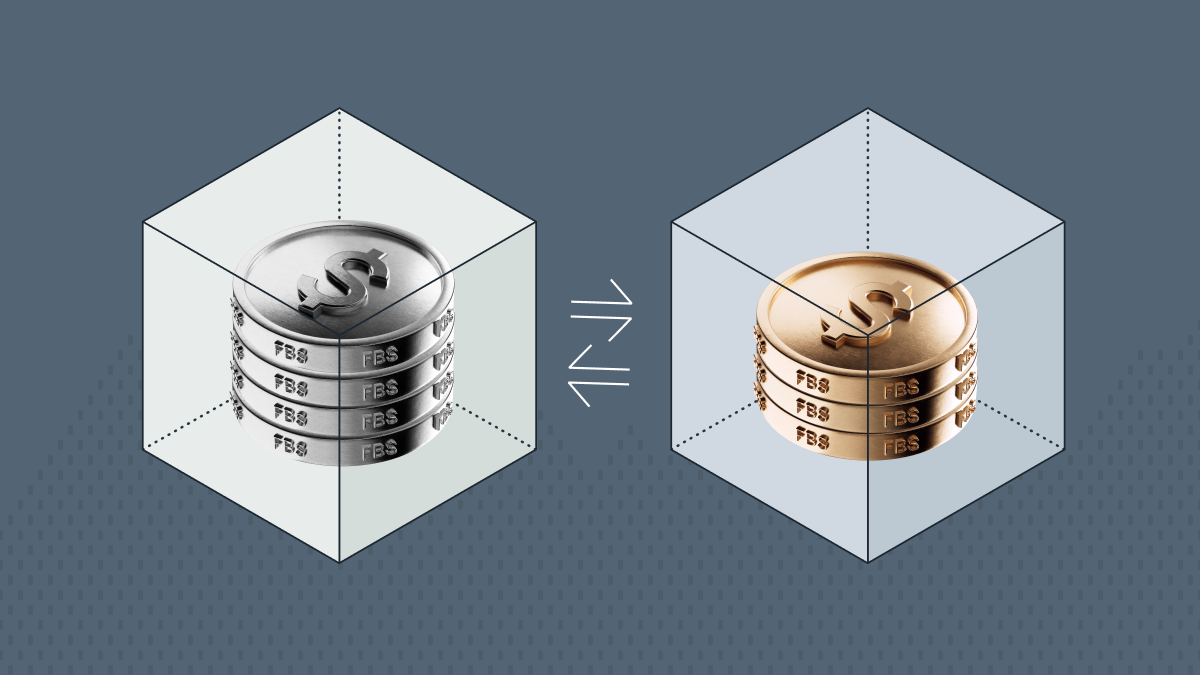
เงินเฟียตคืออะไร?
คุณอาจเคยได้ยินเรื่องเงินเฟียต (fiat money) หรือสกุลเงินเฟียต (fiat currency) แต่ไม่ใช่ทุกคนที่จะรู้ว่ามันคืออะไร ไม่ มันไม่ใช่เงินที่คุณเก็บออมเพื่อซื้อรถอิตาลี อ่านบทความนี้เพื่อเรียนรู้ทั้งหมดเกี่ยวกับเรื่องนี้
ตรงข้ามกับสกุลเงินประจำชาติที่ได้รับการสนับสนุนจากสินค้าโภคภัณฑ์จริงจำนวนหนึ่ง เช่น ทองคำ หรือ เงิน ซึ่งมีมูลค่าเชื่อมโยงกับมูลค่าของสินค้าโภคภัณฑ์สำรอง เงิน Fiat เป็นประเภทของสกุลเงินที่ไม่มีค่าที่แท้จริงและไม่ได้รับการสนับสนุนจากสินค้าโภคภัณฑ์ทางกายภาพอย่างทองคำหรือเงิน ถูกสร้างขึ้นตามคำสั่งจากรัฐบาล และทำงานตราบเท่าที่รัฐบาลและเศรษฐกิจมีเสถียรภาพ มูลค่าของมันถูกกำหนดโดยคำสั่งของรัฐบาลและความไว้วางใจของผู้คนที่ใช้มัน เงิน Fiat อำนวยความสะดวกในการทำธุรกรรมในชีวิตประจำวันและเป็นวิธีการแลกเปลี่ยนมาตรฐานในเศรษฐกิจสมัยใหม่ ตัวอย่างทั่วไป ได้แก่ ธนบัตรและเหรียญ
คำว่า "fiat" มาจากคำภาษาละตินที่แปลว่า "let it be done." (ปล่อยให้มันเป็นไป) ซึ่งสะท้อนถึงอํานาจของรัฐบาลที่ออกเงินตรา
ตัวอย่างของสกุลเงินเฟียต
สกุลเงิน Fiat เป็นรูปแบบสกุลเงินที่ใช้กันมากที่สุดในโลกปัจจุบัน นี่คือตัวอย่างบางส่วน:
ดอลลาร์สหรัฐ (USD) | สกุลเงินหลักของสหรัฐอเมริกาและใช้กันอย่างแพร่หลายเป็นสกุลเงินสำรองทั่วโลก |
ยูโร (EUR) | สกุลเงินอย่างเป็นทางการของยูโรโซนที่ใช้โดยประเทศสมาชิกสหภาพยุโรป 19 ประเทศจาก 27 ประเทศ |
เยนญี่ปุ่น (JPY) | สกุลเงินของญี่ปุ่นเป็นที่รู้จักในด้านบทบาทสำคัญทางการค้าและการเงินระหว่างประเทศ |
ปอนด์สเตอร์ลิงอังกฤษ (GBP) | สกุลเงินของสหราชอาณาจักร มักเรียกง่ายๆ ว่าเงินปอนด์ |
ดอลลาร์ออสเตรเลีย (AUD) | สกุลเงินของออสเตรเลียใช้กันอย่างแพร่หลายในภูมิภาคเอเชียแปซิฟิก |
ดอลลาร์แคนาดา (CAD) | สกุลเงินอย่างเป็นทางการของแคนาดา ซึ่งมักซื้อขายในตลาดฟอเร็กซ์ |
ฟรังก์สวิส (CHF) | สกุลเงินของสวิตเซอร์แลนด์ซึ่งเป็นที่รู้จักในด้านความมั่นคงและสถานะที่ปลอดภัยในช่วงเวลาที่มีความไม่แน่นอนทางเศรษฐกิจ |
หยวนจีน (CNY) | สกุลเงินอย่างเป็นทางการของสาธารณรัฐประชาชนจีน ซึ่งถูกนำมาใช้มากขึ้นในการเทรดระดับโลก |
เรอัลบราซิล (BRL) | สกุลเงินของบราซิลซึ่งเป็นส่วนหนึ่งของเศรษฐกิจที่ใหญ่ที่สุดในอเมริกาใต้ |
รูปีอินเดีย (INR) | สกุลเงินของอินเดียที่ใช้ในเศรษฐกิจที่ใหญ่ที่สุดแห่งหนึ่งของโลก |
มูลค่าของสกุลเงินเหล่านี้ขึ้นอยู่กับความไว้วางใจในรัฐบาลที่ออกสกุลเงินเหล่านี้และเศรษฐกิจของพวกเขา
